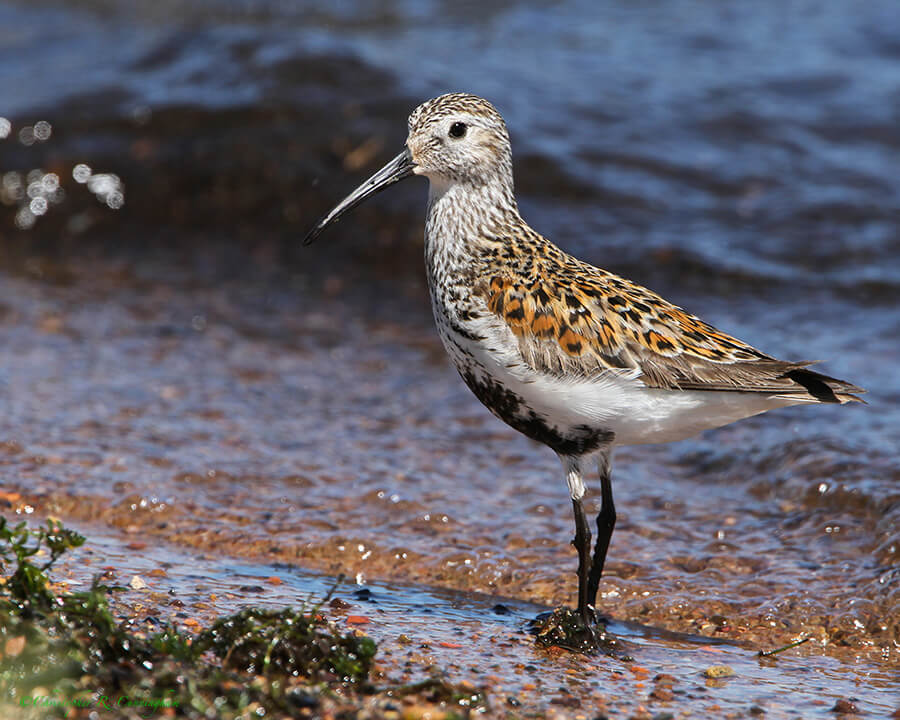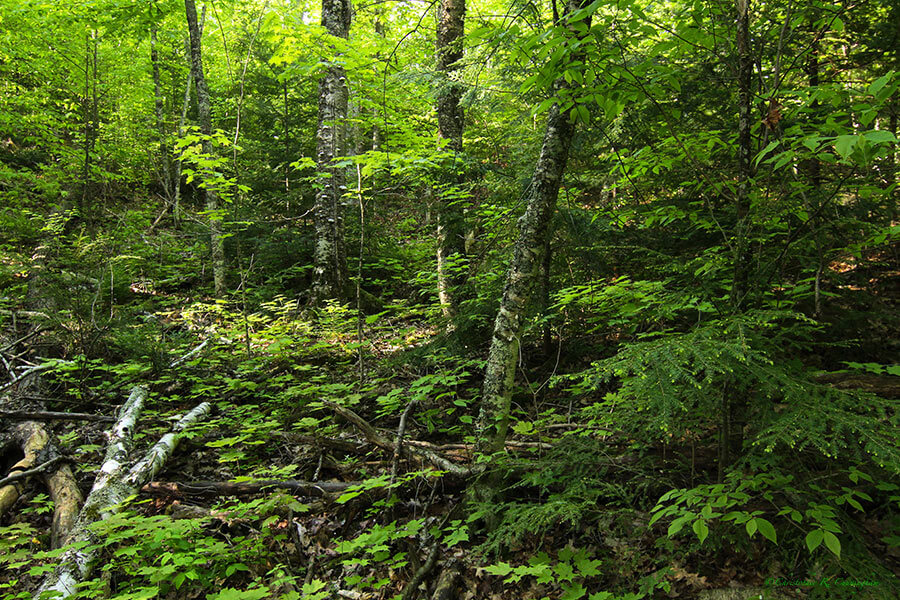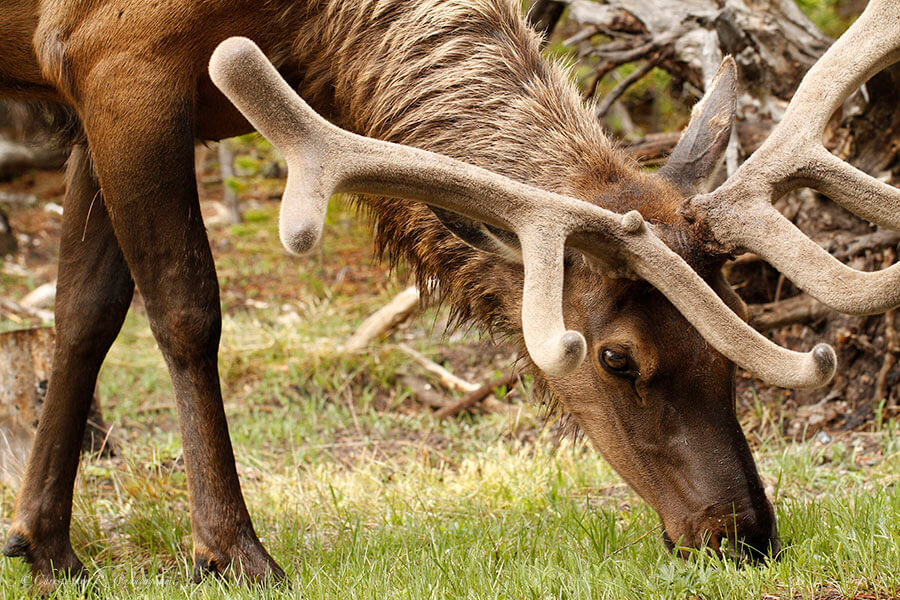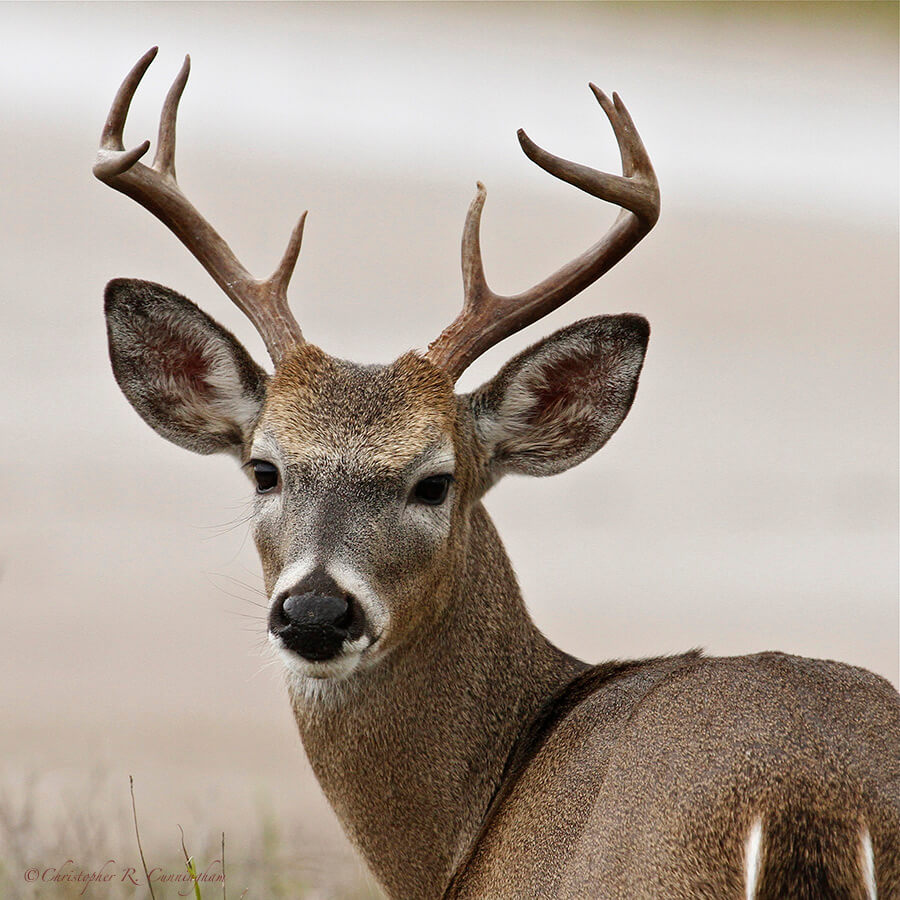
We usually take two to three major birding trips outside the Texas Gulf Coast region each year. We strive to visit many different types of habitats, with the hopes of seeing as many different species of plants and animals as possible.
This week we returned from a trip to northern Wisconsin and Minnesota. We spent most of our time in the Chequamegon-Nicolet National Forest and along the southern shore of Lake Superior, primarily at the Apostle Islands National Lakeshore. Besides seeking a brief respite from the Texas heat, we were eager to explore the cool temperate broadleaf and mixed forests. We found these forests to be among the most beautiful and botanically diverse woodlands we have ever encountered, rivaling the temperate rain forests of the Pacific Northwest aesthetically. Many species of songbirds and others that migrate through Texas in the fall and spring nest in these forests. We had hopes of hearing their summer songs and seeing their summer colors.
Having grown up in Minnesota and visited similar habitats in Northern Minnesota and Wisconsin many years ago, I thought I knew what to expect. I remember taking field trips for undergraduate geology courses in Minnesota and Wisconsin in the 1980’s and noticing the great abundance of wildlife. Sadly, a great abundance of wildlife was not what we found on this trip.

Amphibians are now rare in northern Wisconsin. For someone with childhood memories of woods hopping with toads and alive with frog song, what I found was shocking. Marsh, bog, swamp, and adjacent woodland habitats that should have been noisy with Northern Leopard Frogs (Rana pipiens) were nearly silent. A quick check of on-line references found numerous references to catastrophic declines in Northern Leopard Frog numbers in the past few decades. The rarity of amphibians helps to explain the rarity of waders hunting in the vegetated shallows of lakes and marshes: we saw only a handful of Great Blue Herons and a single Green Heron. The silence of these northern Wisconsin woods is grim testimony to the global amphibian crisis.
Strangely, even Red-winged Blackbirds are not that abundant anymore. In one marsh I noted three birds: and one was banded! What gives? According to the AMNH Birds of North America, Red-winged Blackbirds are one of the most abundant birds in North America, known for moving around in vast flocks. Again, a quick internet search revealed references to major declines in Red-winged Blackbird populations in the northern Midwest and Canada (apparently I’m not going crazy!).
Birds that are abundant include American Crows, European Starlings, and Brown-headed Cowbirds–not surprising since these species thrive around humans and the environmental changes we cause. Brown-headed Cowbirds, of course, are contributing to the decline of songbird numbers (terrifyingly so) through nest parasitism of about 220 species. According to the video Gulf Crossing: An Essay on Bird Migration, we have lost about 40% of our songbirds in the past 25-30 years due to several causes. Based on what I have seen in the north woods, I would not be surprised if losses were significantly higher.
Birds may be suffering, but nasty arthropods are proliferating. North woods habitats are typically quite buggy in late spring and early summer, but what we found was really quite mind-boggling, and rivaling the most bug-infested salt marsh environments we’ve ever encountered (our Original Bug Shirts kept us alive!). Local after local (including some old-timers) described the bug situation as the worst they had ever seen with respect to mosquitos, wood ticks, and deer ticks (And don’t forget gnats!). One local remarked how at one point he simultaneously had three Lyme disease bull’s-eyes on his body. A quick internet search revealed articles (not surprisingly) blaming climate change for the bug infestation (Hmmmm.)
White-tailed Deer, too, are everywhere in huge numbers. I saw more White-tailed Deer than squirrels! Estimates are that White-tailed Deer populations in Wisconsin have increased 600% since 1950. This is probably due to humans feeding them and killing off predators such as wolves and mountain lions. Silly humans. White-tailed Deer abundance correlates negatively with songbird abundance because of the way deer graze away the understory vegetation. I was shocked to learn recently that White-tailed Deer are known to eat bird nests, including eggs and nestlings, of ground- and understory-nesting birds. Habitats can only sustain a limited number of large ungulates. Cross a numerical threshold and ecosystems collapse. Northern Wisconsin has apparently crossed that threshold.


Until recently I have been in the doubting camp as far as anthropogenic climate change has been concerned. My general sense of the climate has been that it is consistent with heading deeper into an interglacial regime, with warmer average temperatures and decreased equability. These periods are associated with loss of biodiversity and stormy frontal weather patterns in the higher latitudes. I thought current climatic changes could probably be explained by Milankovitch cycles, perhaps in conjunction with variation over time in solar subatomic particle production and the amount of cloud cover produced as reported by CERN. An excellent recent summary article has led me to re-evaluate my position. On the other hand, I am not at all skeptical that humans are destroying the environment globally in other ways. That we are in the midst of an anthropogenic mass extinction event is beyond question. One need look no further than Wisconsin, Texas, or wherever you live.
©2013 Christopher R. Cunningham. All rights reserved. No text or images may be duplicated or distributed without permission.